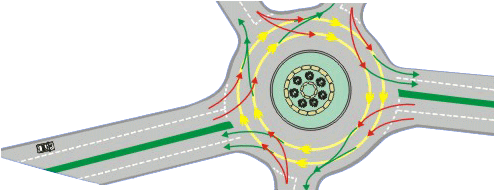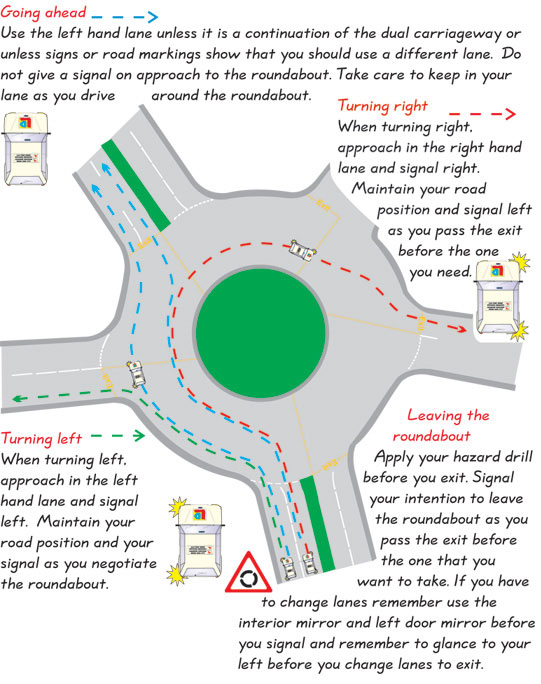Learn to Drive
Driving lesson brief 9. Roundabouts
Introduction
Once you have learnt how to cross and join moderately busy traffic streams from crossroads, T-junctions and Y-junctions it’s time to look at dealing with major roundabouts.
Although you may have already dealt with roundabouts in quiet housing estates, in this lesson you will learn how to deal with much more complex roundabouts on major roads with multiple lanes and multiple exits.
![]() Lesson objectives
Lesson objectives
By the end of this lesson you should be able to:
- Explain the procedure for joining and leaving complex roundabouts with multiple lanes and exits
- Recognise roundabouts early and take the necessary observations to ensure you approach the roundabout in the correct lane while looking for opportunities to proceed
- Give the appropriate signal on approach for the exit you intend to take
- Time your approach speed to make full use of any opportunities to proceed
- Identify and respond accordingly to any drivers ahead who may stop unnecessarily at the give way line because they haven’t taken the appropriate observations on approach
- Exercise good lane discipline throughout the roundabout while anticipating the actions of other drivers and in particular those driving larger vehicles
- Correctly apply the hazard drill as you exit the roundabout making sure to signal at the appropriate time and glance to the left as necessary
Subject brief
During this lesson you will learn how to approach and negotiate roundabouts safely. Roundabouts are designed to keep the traffic flowing. Traffic should only flow in a clockwise direction around the island in the centre of the roundabout. This circular road is a one-way street and may be made up of one or more lanes. Traffic entering the roundabout must give way to traffic already on the roundabout approaching from the right.

As with other junctions you apply your hazard drill and take observations of the major road ahead as early as possible. However, unlike other junctions most roundabouts are quite open so that you can assess the flow of traffic on the roundabout at an early stage as you approach the give way lines. The purpose of this is to give you the time to adjust your speed so that, if possible, you can safely merge into any gaps, in the flow of traffic from the right without stopping. Unfortunately, some drivers use roundabouts as though they were stop junctions and only take observations to the right at the last minute. As a result they are prone to stopping at the give way line when it isn’t necessary. Unfortunately, vehicles behind may end up running into the back of them, as they wouldn’t expect them to stop if the way was clear. Therefore, don’t make this mistake and do not assume that the vehicle in front will proceed, even if the way is clear.
How to proceed around a roundabout

Highway code practical references
Rules: 184-190